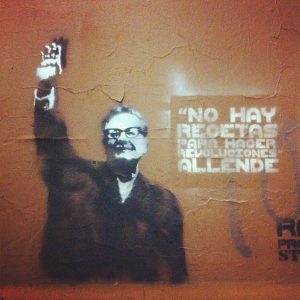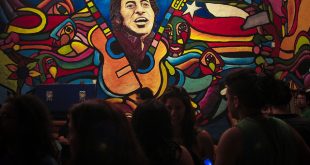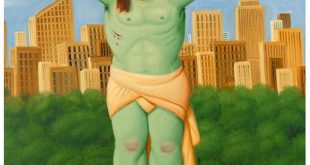Talk to any Chilean person about their country for long enough, and you’re likely to hear them say some variation of the following: Santiago is Chile. This seemingly over simplistic expression captures the sentiments of this country’s population, and it’s sometimes quite true. Although Chile is a geographically and anthropologically diverse nation, the vast majority of its population, business, and other functionalities are located in its capital city. Because of this, it can also be said that Santiago is the cultural center of the country. Obviously, the city boasts more musical, artistic, culinary, and literary happenings than any other area in Chile. This isn’t to say that the other places don’t have wonderful things to offer—but if you’re looking for a crash course in Chilean culture, Santiago is the place to go.
Artistically speaking, you’ll find that Santiaguinos and other Chileans alike tend to celebrate their national poets, painters, and musicians above those of foreign lands. Perhaps the solitude of Chile’s geographical location has played a role in its preference for art of its own creation. For example, you can’t spend more than a few days in Santiago without hearing about Pablo Neruda, Gabriel Mistral, and Isabel Allende, three writers whose work is required reading for anyone hoping to understand Chile. If you walk down any street in the downtown area, you’ll see people selling books spread out across blankets on the sidewalk. Peruse this selection and you’ll see it’s heavy on the works of these three wordsmiths. Creative writing is generally encouraged, with literature courses on offer at every university and short story contests advertised in the metro.

The visual artists of the country have historically engendered the same sense of patriotism as the written word—take a visit to the Fine Arts Museum and you can gaze upon the work of the pre-eminent sculptors and painters of the country. Chileans in general seem to value artistic expression, whether it be intricate graffiti, murals in the metro, or avant-garde sculptures in parks and office buildings. Musically, Chilean people tend to equally value the work of their own countrymen as well as foreign tunes. While there are some popular Chilean singers and songwriters, Chileans also love the same international superstars as everyone—if you walk around the city, you´ll see concert posters for acts ranging from Cat Stevens to Justin Beiber. Despite this modern attitude toward music, there is also a strong sense of nationalism toward the cueca (the national dance consisting of a few simple steps) as well as folk and native music from the different regions of the country. If you’re lucky, you´ll be treated to a sampling of these tunes by street performers (sometimes, they even board the buses and play for the passengers).

Turn on your TV in Santiago and you’ll see a similar mix of global and national programming. Many Chileans love Latin American telenovelas (similar to soap operas), but there is also a heavy emphasis on programming from English-speaking countries such as the USA and the UK. You’ll find the same thing in any movie theaters: a blend of Chileno and other Spanish-language films as well as the biggest blockbusters from around the globe. Perhaps this approach to the arts says a lot about Chilenos in general: they are holding on to their national roots while also branching out to be a modern player in an ever-changing world.
 SantiagoChile.com The Ultimate Guide to Santiago – for Residents & Visitors
SantiagoChile.com The Ultimate Guide to Santiago – for Residents & Visitors



